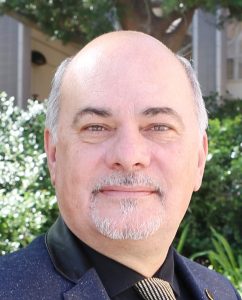CERC Seminar – May
New Generation Electrocatalysts for Fuel Cells
May 25, 2021 @ 11:00 AM
Abstract
Platinum Group Metal-free (PGM-free) catalysts have been extensively developed for both Proton Exchange Membrane (PEM) and Alkaline Exchange Membrane (AEM) fuel cells aiming automotive, stationary and portable applications. In this lecture we will address the critical challenges that our team has faced on the way to practical application of such catalysts.
Over the last decade or so (while at the University of New Mexico), our team has developed the Sacrificial Support Method (SSM) as a main approach for templated synthesis of hierarchically structured electrocatalysts materials. In this method the catalysts precursors are being absorbed on, impregnated within or mechanically mixed with the support (usually mono-dispersed or meso-structured structured silica), thermally processed (pyrolyzed) and then the silica support is removed by etching to live the open frame structure of a “self-supported” material that consists of the catalysts only.
The makeup and structure of the active site/sites of the PGM-free ORR electro-catalysts, including geometry (coordination) and chemistry (composition and oxidation state) remain contentious even after 50 years of research. There is an emerging agreement that iron and nitrogen functionalities, displayed on the surface if the carbonaceous substrate/support, govern ORR activity. This is often combined with a broadly accepted hypothesis that micro-porous surface area plays a critical role forming the active site. Candidate structures participating in ORR include multitudes of nitrogen defect motifs in the carbon matrix of different degrees of graphitization, with metal incorporated as metal nano-particles, corresponding (native) oxides and/or as atomically dispersed, oxidized metal species, linked (coordinated) to nitrogen defects in carbonaceous matrix in a variety of possible configurations. This presentation will attempt to address rational design and performance metrics of M-N-C electrocatalyst based on a broad experimental set of data. Scientific and engineering technology challenges will be discussed in the context of maturtion of Polymer Electrolyte Fuel Cells (PEMFC) and their market penetration.
This lecture will review the applications of this new class of electrocatalyst across several fuel cell applications: from automotive to microbial and from regenerative electrolyzer/ fuel cell units to water purification and de-salination devices. These catalysts allowed also broad introduction of state-of-the art electrochemical technology in microbial electrochemical devices: microbial fuel cells, bio-electrochemical electrolyzers and advanced water treatment technologies.
New/emerging directions for extending these materials types to catalysis of CO2 electro-reduction and N2 low temperature, low pressure electro-reduction aiming potentially at electrochemical ammonia synthesis will be discussed as well.

Biography
Dr. Plamen Atanassov
Chancellor’s Professor of Chemical & Biomolecular Engineering, Materials Science & Engineering and Chemistry, University of California, Irvine
ZOOM Meeting ID: 671 7500 9520 Passcode: 2360